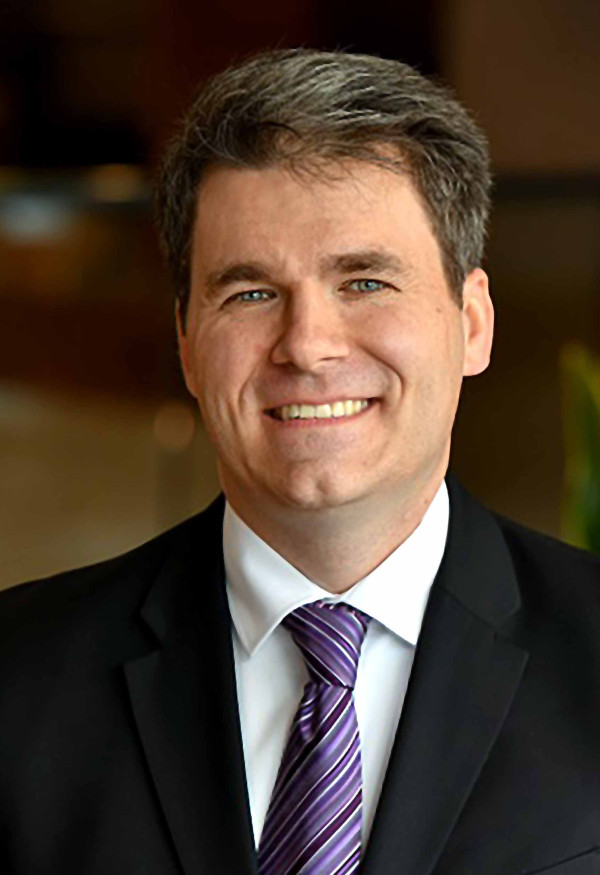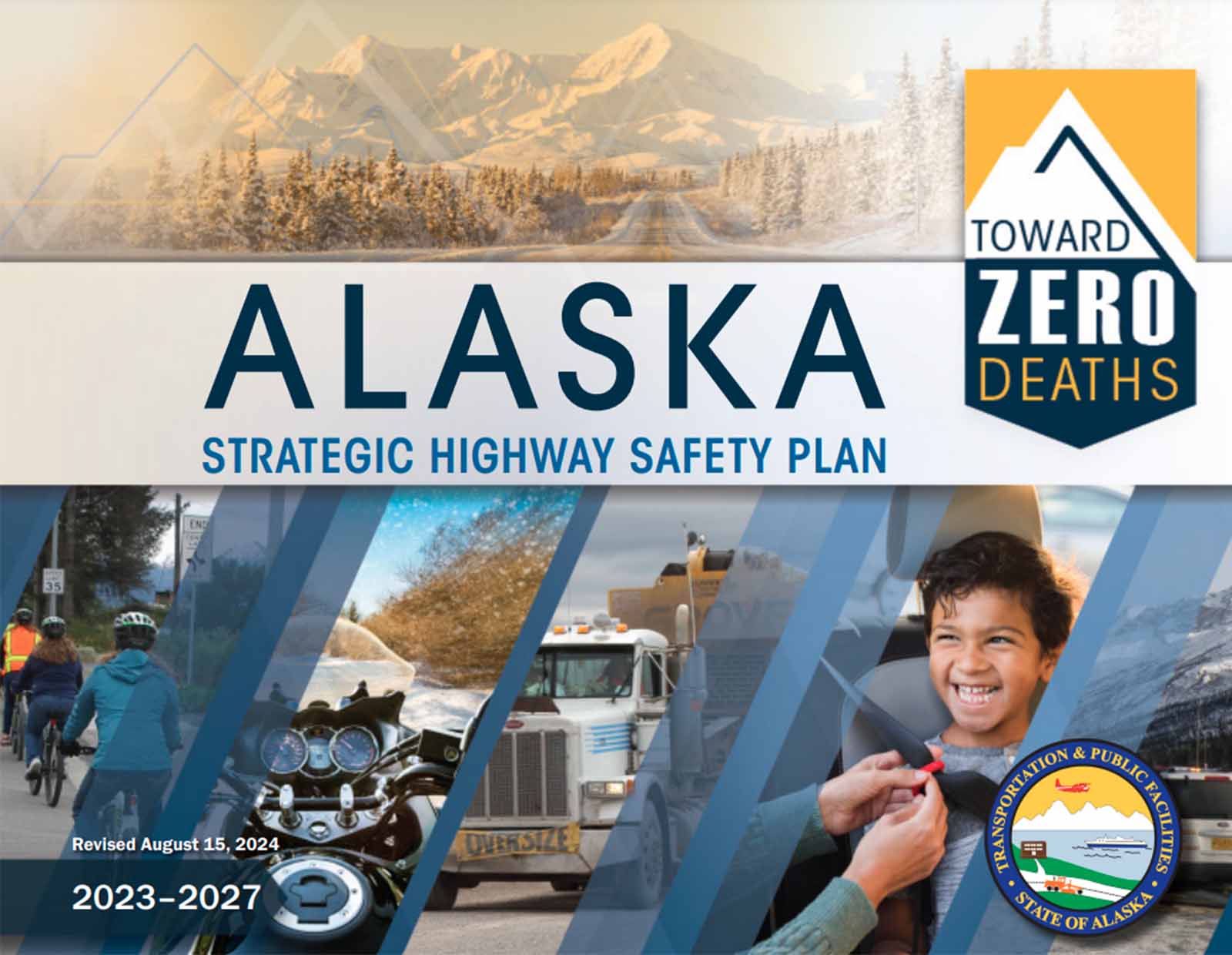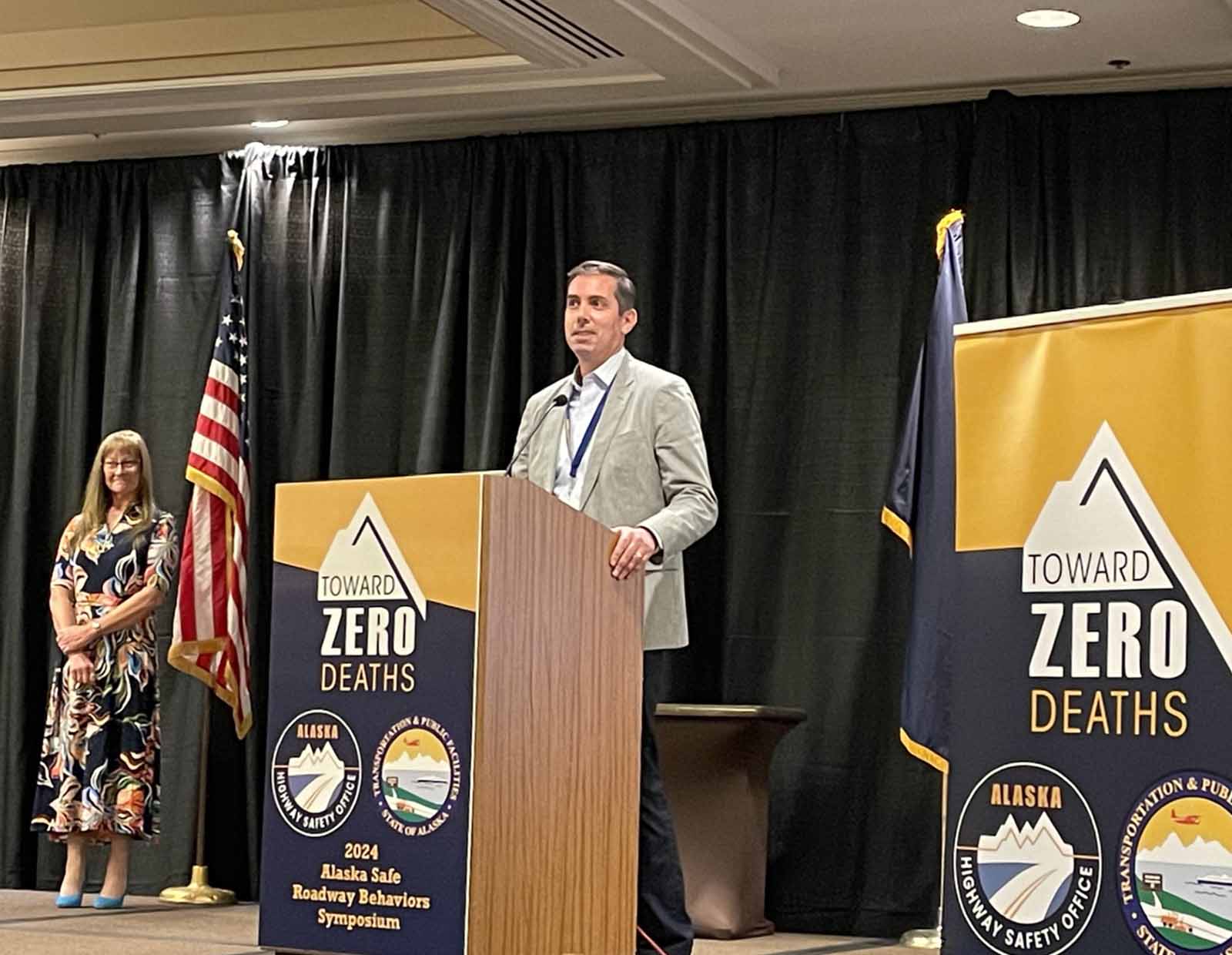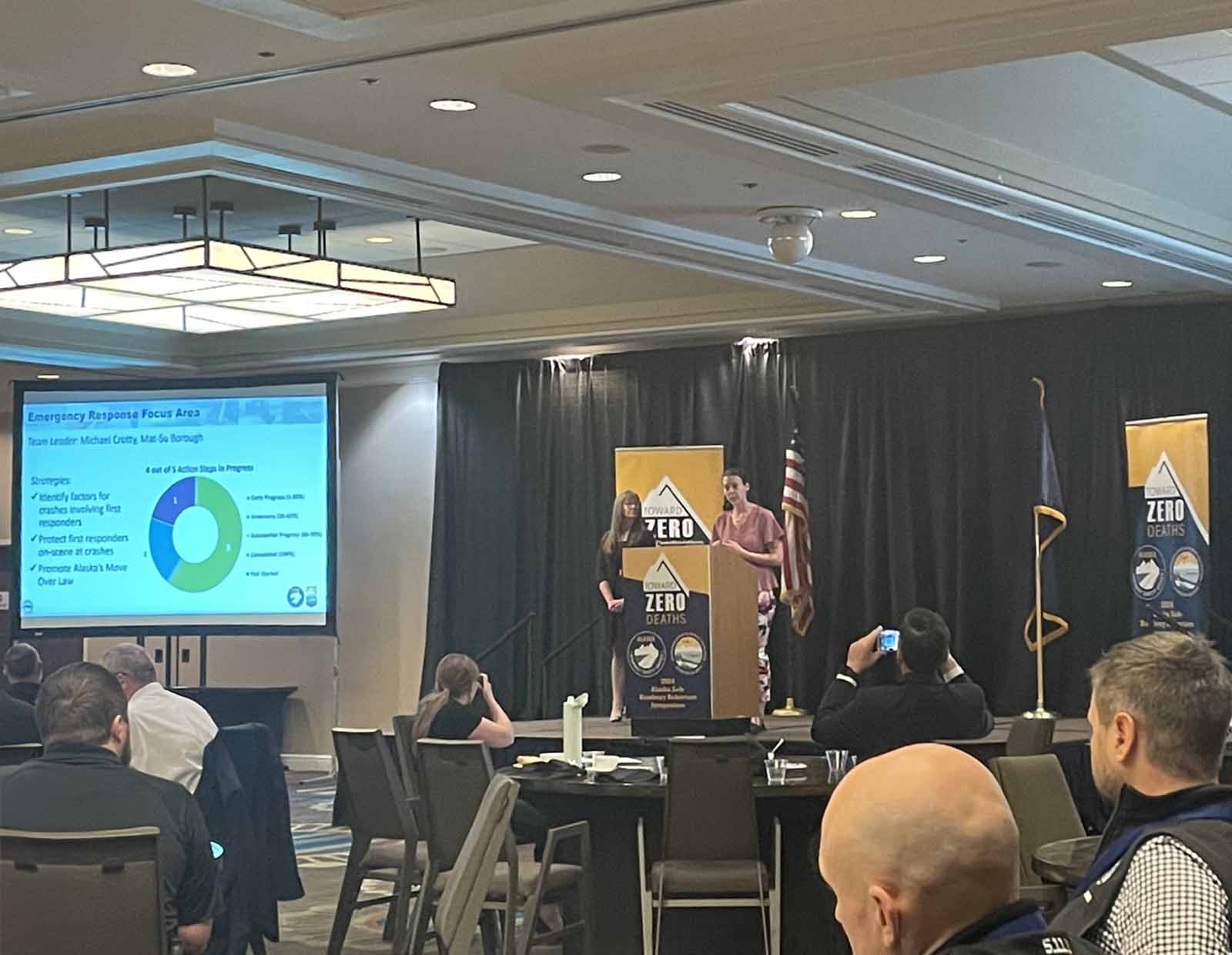
Helping our clients reach their safety goals means staying informed about the ever-changing safety landscape and the particular challenges different communities confront. In September, 200 traffic safety advocates, law enforcement partners, emergency medical services providers, and court officials gathered to discuss roadway safety challenges in the far north. The Alaska Highway Safety Office hosted the 2024 Alaska Safe Roadway Behaviors Symposium in partnership with Alliance Highway Safety. I attended the conference along with Ryan Klitzsch and Rachel Chiquoine. In this blog post, we share the major trends and ideas discussed at the symposium.
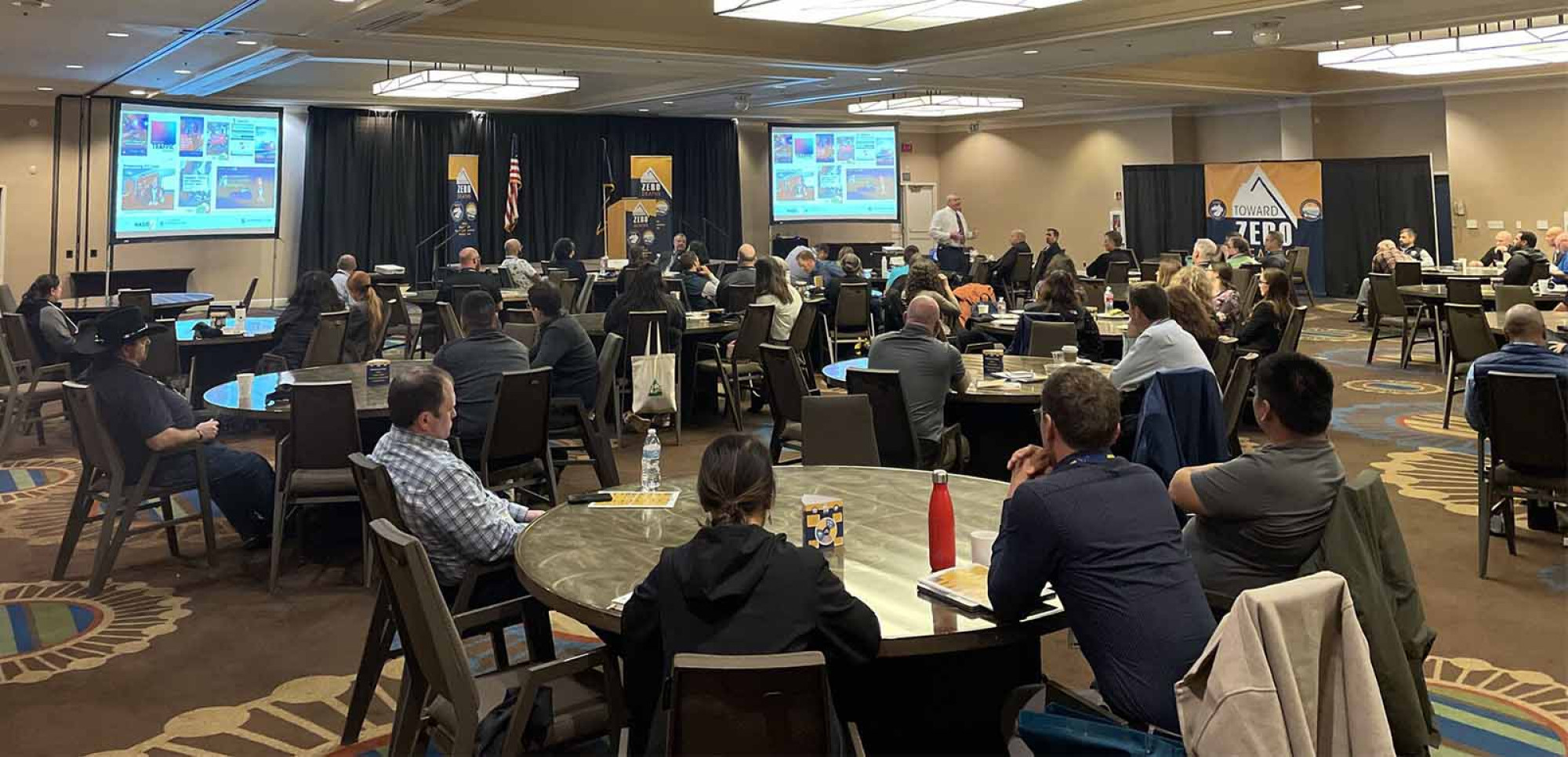
Drug-Impaired Driving Often Involves Legal Prescription Drugs. Acknowledging This Means Taking A Different Course of Action
Like most other areas of the U.S., Alaska is seeing a rise in drug-impaired driving. We often think of drug-impaired driving as involving cannabis or illegal drugs, but a significant proportion of drugs involved in fatal crashes are legally obtained prescription drugs that are potentially impairing. What does this mean for drug-impaired driving?
We are all familiar with the ubiquitous drug label “do not use while operating heavy machinery,” but these warnings are rarely explicitly connected with driving.
The problem is compounded among older individuals who have multiple prescriptions with synergistic effects.
Further, potentially impairing drugs are more frequently prescribed for off-label uses—other applications that doctors discover beyond their original purpose—and so their use in impaired driving crashes can suddenly expand.
Acknowledging this reality means stakeholder discussions about drug-impaired driving should include healthcare providers such as the pharmaceutical companies, physicians and pharmacists distributing these medications.
This is not a new conversation. I recall a drug-impaired driving national forum several years ago in which representatives from these healthcare sectors participated but at the time seemed inclined to keep impaired driving the responsibility of individual patients and the rest of society. Looking at this through the framework of the Safe System Approach, it’s clear we should scrutinize all parts of the system and take advantage of every preventative opportunity.
So what is being done?
A new NHTSA initiative is to support a Forensic Toxicology Liaisons (FTLs) network that aims to coordinate between forensic toxicology labs, law enforcement, prosecutors and court officials. Some supported services include helping toxicology labs achieve greater standardization, training, educational materials, legislative support, grant writing, task force support and best practice sharing. This will also help support a stronger understanding of medication-based impairment.
But maybe we should also take a cue from partnerships struck with the legal cannabis industry. Early in the process of cannabis legalization, national cannabis advocacy organizations were very willing to downplay the risks of cannabis-impaired driving. However, on the local level, dispensaries and other local businesses were much more enthusiastic about traffic safety partnerships to encourage the responsible use of their products. Traffic safety advocates might have more success working directly with local healthcare providers about medication safety.
Jay Otto Presents New Model to Achieve Change in Traffic Safety Culture
Jay Otto, Managing Partner at The Banyan Collaborative, presented a new model to achieve change in traffic safety culture—our shared values and beliefs among road users that influence their decisions to behave or act in ways that affect road safety. National surveys have shown for years that traffic safety culture is remarkably poor in several key areas. The model offered by Mr. Otto proposes that we differentiate beliefs, behaviors, and consequences. Notably, the notion of “behavior” should not refer only to individual behaviors but rather to behaviors and actions by everyone in the system, including engineers and policymakers.
Why is separating the concepts of beliefs, behaviors and consequences essential to effectively pursuing traffic safety goals? Let's try to understand this with a widely deployed example.
When practitioners implement high visibility enforcement (HVE), the behaviors are dangerous driving, traffic enforcement, and safety communication through campaigns. Supporting those behaviors are the beliefs about whether drivers should drive safely, avoid illegal activities and understand the risk of being cited. The consequences we are most interested in this instance are crash outcomes.
All too often, performance measures, outcomes, and planned countermeasures only focus on immediate behaviors like issuing citations and implementing media campaigns. Traffic safety culture change lies in the two outside concepts—changed beliefs and ultimate outcomes.
Further, when planning any kind of safety countermeasure, from red light cameras to roundabouts, we should be thinking about how the program will change underlying beliefs about safe behaviors and safety programs. If the public considers the countermeasure only an inconvenience not to be taken seriously or even generates contempt, its days are probably numbered.
A Paradigm Shift in the Leadership and Approach to Safety Goals
Mr. Otto pointed out that one of the greatest failures in leadership can be to treat an “adaptive problem” like a “technical problem.” He identified growing a traffic safety culture and getting to zero fatalities as both adaptive problems.
The difference between “technical” and “adaptive” problems, he explained, is that technical problems and their solutions are fully knowable by experts, and an authoritative leader can achieve change and improvement. We can all think of many safety issues in which we know what countermeasure to apply to a specific, known problem, and strong individual management can make a tremendous difference.
In contrast, adaptive problems and solutions are unclear to experts, messy and iterative. They often involve numerous stakeholders, moving targets and making progress requires learning and adaptation. For those who work on traffic safety culture and strategic safety planning and management, this may start to sound familiar.
To tackle these types of problems, Mr. Otto proposes that it’s helpful to:
Challenge assumptions.
Identify key questions (which may not have immediate answers).
Lean into conflicts that emerge.
Allow new roles and partnerships to develop.
For instance, the Safe System Approach imposes critical new questions about addressing safety systemically and shines new light on significant gaps in investment and partnership (such as post-crash care). For our traffic safety future, there is likely no silver bullet or even a fully foreseeable path forward. Rather, we will need to focus on asking the right questions that lead to the right interim steps and adjust our course as conditions change.
CS Leads Roundtable on 2023-2027 Alaska Strategic Highway Safety Plan Implementation
CS’ Rachel Chiquoine facilitated a roundtable session about Alaska’s strides toward building a Safe System through the implementation of the 2023-2027 Alaska Strategic Highway Safety Plan (SHSP). Session participants discussed what they perceive as the greatest transportation safety issues in Alaska, along with solutions to break down silos between disciplines, build a culture of traffic safety and partner with communities for roadway safety. Our team supported the Alaska Highway Safety Office in implementing over 30 SHSP strategies, and over 75 traffic safety partners collaborated to address engineering, infrastructure, behavioral programs, education, outreach, enforcement and emergency response activities.
Native Alaskans Have Higher Rates of Injury and Death While Facing Numerous Barriers
The rates of transportation-related serious injury and death are significantly higher for Alaska Native residents. By some measures, these roads are the most dangerous highways in America. Native residents face many other barriers to safety, including access to adequate infrastructure, lack of law enforcement services and lack of resources. Poor data is a particularly serious challenge, as accurate safety data is the key to receiving grants to fund additional safety initiatives. The group discussed the need to identify local champions and navigate sensitivities around tribal culture.
Best Practices for Public Participation and
Engagement Emerge
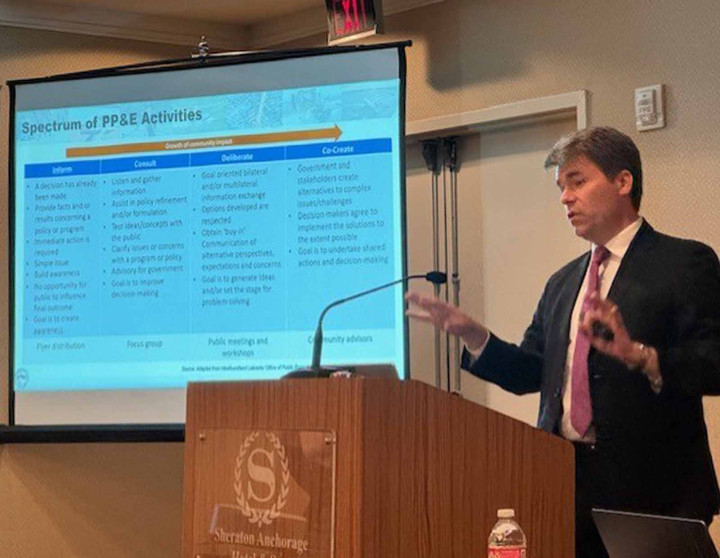
Shandi Smith, Director of Engagement at Alliance Highway Safety, and I presented a model for more effective public participation and engagement (PP&E) for highway safety planning. In the past few years, a body of best practices has emerged on what activities will (and will not) fulfill federal requirements, how to use data to prioritize communities for outreach, how to effectively market events and how to credibly connect with audiences. Finally, we walked through an actual PP&E session with the attendees giving feedback on the state’s program. We are currently helping several states successfully navigate PP&E requirements, meet federal standards and establish robust feedback loops for public input.
Thank you to the Alaska Highway Safety Office and Alliance Highway Safety for an excellent symposium. We look forward to the next one.
Let’s Connect
If you found this blog insightful, you can receive more content like this by subscribing to my weekly transportation safety newsletter on LinkedIn: Safe System Weekly. Don’t hesitate to reach me directly at rmartin@camsys.com.
